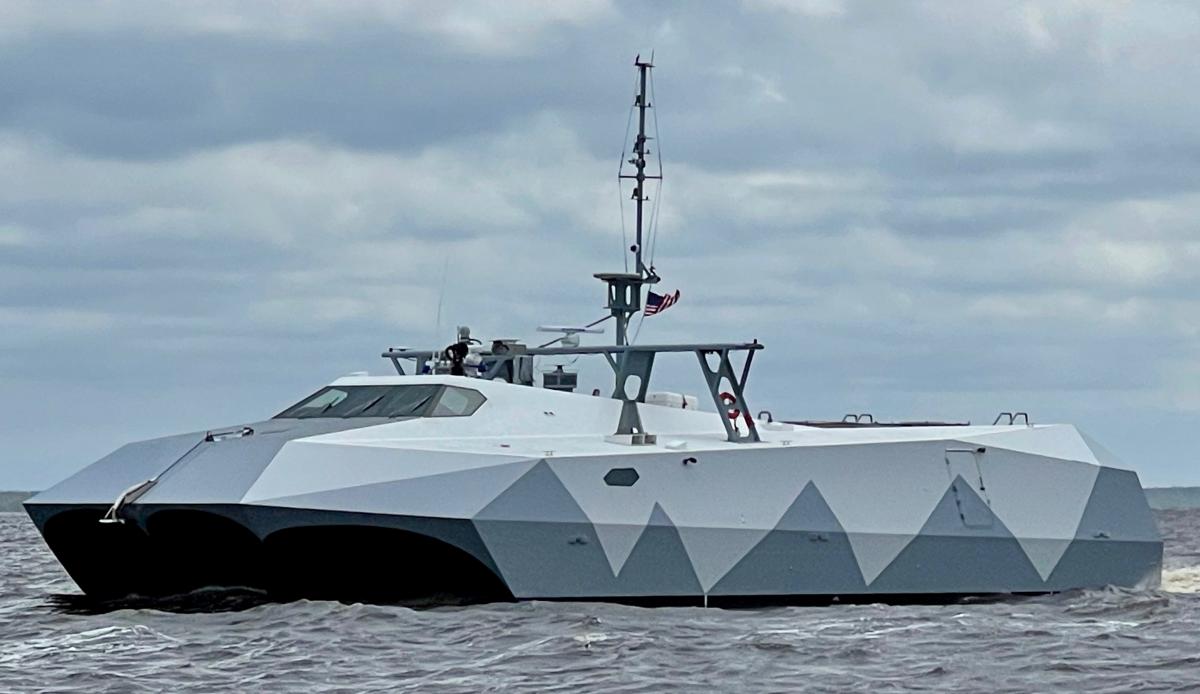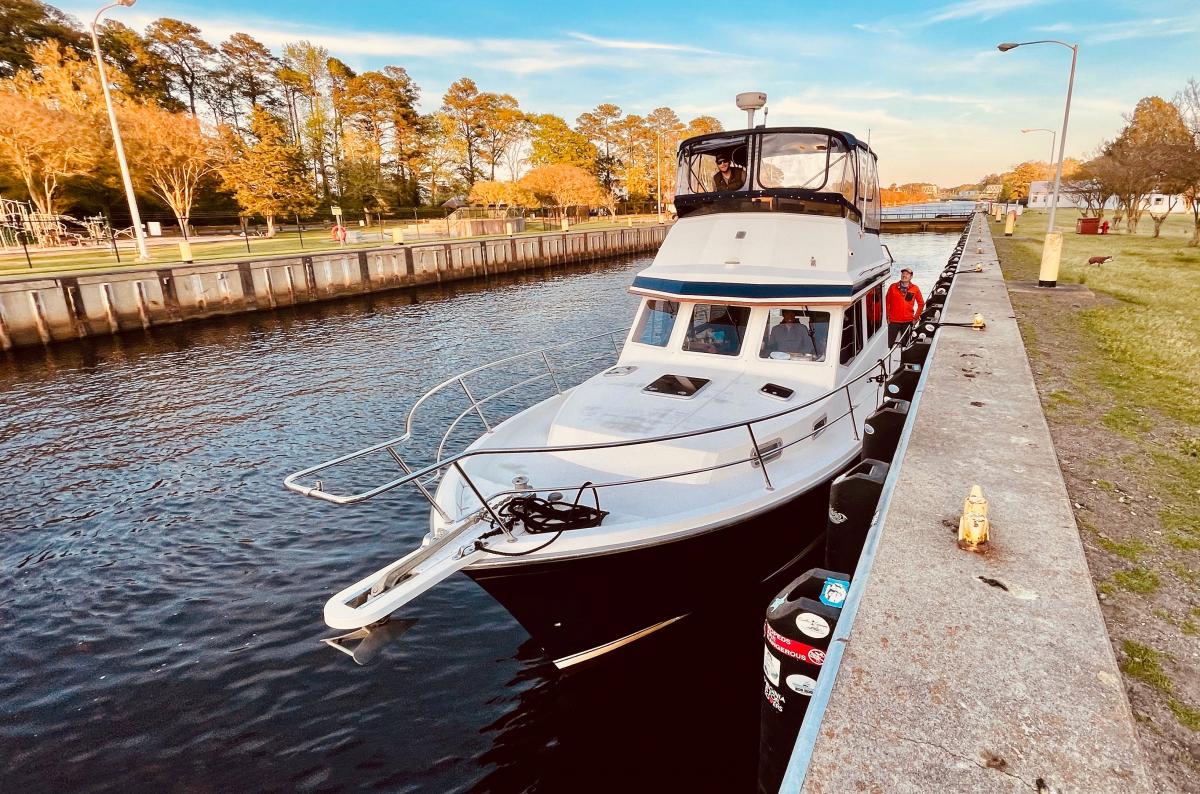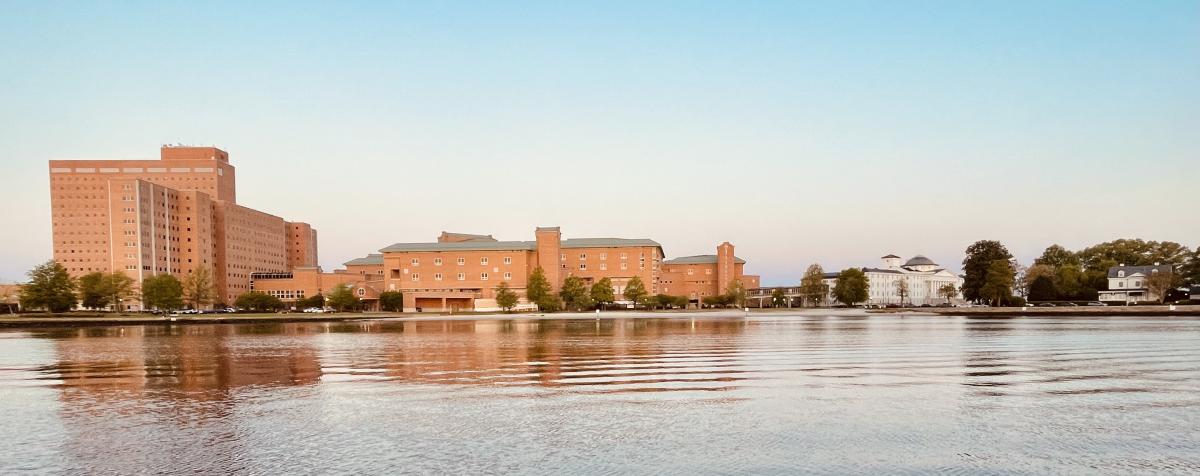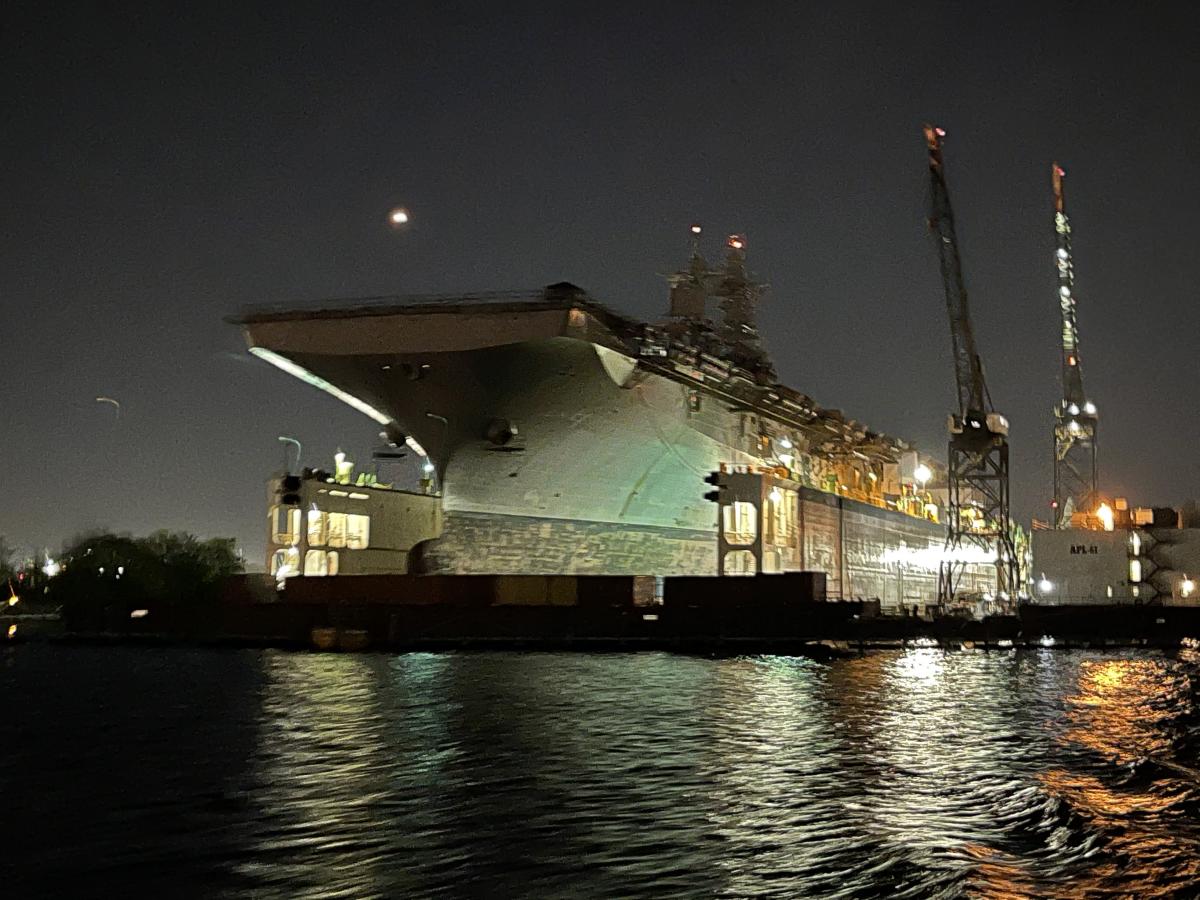I awoke this morning, the sun’s first light transforming the monochromatic colors of night into the full spectrum colors of day.
Wednesday. The harbor of downtown Norfolk studded with all kinds of US Navy vessels – some museum pieces, some in Himalayan-scale dry docks for repairs, bottom painting, restoration and rejuvenation, still others lying in wait for next assignments.
Mixed in the whole scene: downtown Norfolk’s vibrant and attractive riverfront. The city’s tourism-entertainment complex gleaming amidst the city’s iconic military-industrial complex.
Heavy metal.
But it wasn’t a patriotic, rivet-thumping soundtrack that stirred my mind this morning in the dawn’s early light. Instead it was Lovin’ Spoonful’s Nashville Cats. “Play clean as country water. Nashville Cats. Play wild as mountain dew. Nashville Cats. Been playing since they’s babies. Nashville Cats. Get work before they’re two “
Gentle, for the morning.

The unique military-style catamaran awaiting the opening of the swing bridge over the Alligator River between Pamlico and Albemarle sounds.
This the beginning of the fourth and, with any luck, final day of a 600-mile cruise from Charleston to Annapolis. Bringing Ross’s new-to-him vintage Saber cabin cruiser to its new home. Four of us total. Greg, me and Rob crewing.
We started the voyage last Sunday morning, checking into the Intracoastal Waterway (ICW) at mile 465, just inside Isle of Palms, north of the many-spired Charleston.
We made ICW Mile 0 in Norfolk after darkness fell Tuesday evening. What a light show.
That left us with another 150 miles of the Chesapeake on Wednesday with light southerly winds, a rising tide and warm spring sunshine assisting the diesels.
We first tasted Norfolk and the US Navy’s presence about noon on Tuesday, working our way down the Alligator River between Pamlico and Albemarle sounds where stiff northeast winds reminded us of who’s in charge.

Ross’s vintage Saber secured to the lock wall in Chesapeake, Virginia, just south of Norfolk on the Intracoastal Waterway.
A long bridge over the river connects North Carolina’s mainland with the Outer Banks. Its channel-spanning swing started swiveling toward close as we approached, forcing us to slow to an idle, radio chattering between awaiting captains and the bridgetender, an official voice slicing through channel 16’s airwaves.
“We’re making 33 knots. Any way we can make the bridge?”
“No sir,” came back the bridgetender. “You’ll have to wait until traffic clears.”
Frustrated silence.

We anchored for the night Tuesday in the harbor of downtown Norfolk, just off the US Navy hospital complex.
We looked behind to the source of the voice. A space-age catamaran – sleek, uncluttered, menacing – closing the distance between itself and the bridge at an impressive clip. Hundred footer or so she was, wearing 21st-century camouflage: randomly geometric black, white, and two shades of gun-metal gray.
A little Internet work combined with our active imaginations. We settled on her being a Navy research vessel and we were certain her top speed would probably match her length. The mind does things like that. Frequently wrong, but never in doubt.
She settled in among the rest of our waiting vessels but moved up into the lead position as the bridge finally started to swing back open. Lumbering through the span, sitting deep, the catamaran’s afterburners lifted her higher on the river’s short choppy waves after she cleared the bridge.
Soon, between her speed and camouflage, she disappeared from sight, perhaps crossing into a dimension known only to our military astro scientists.
We didn’t spot the sleek cat as we passed through Norfolk’s maze of Naval vessels, though she could have been easily lost in the shadows of destroyers and aircraft carriers walling the harbor.
I wondered as we left Norfolk behind and headed north toward Annapolis.
Would the unique vessel cross the uncharted waters of the warp and re-emerge into our dimension somewhere near the Maryland capital? There, where new generations of Naval Academy students build on the knowledge of past generations to further develop the US Navy’s competency and prowess for safeguarding the seas? The camo cat just one manifestation of the hoped-for but often-elusive peace dividend?
Long hours on the water with droning diesels conjures thoughts like these.
Will the future bring us Lovin’ Spoonful’s clean country water, or the heavy metal of Deep Purple’s smoke on the water and fire in the sky? No need to wonder. History continues its ceaseless teaching.
Both, she echoes.
Dennis Forney grew up on the Chester River in Chestertown. After graduating Oberlin College, he returned to the Shore where he wrote for the Queen Anne’s Record Observer, the Bay Times, the Star Democrat, and the Watermen’s Gazette. He moved to Lewes, Delaware in 1975 with his wife Becky where they lived for 45 years, raising their family and enjoying the saltwater life. Forney and Trish Vernon founded the Cape Gazette, a community newspaper serving eastern Sussex County, in 1993, where he served as publisher until 2020. He continues to write for the Cape Gazette as publisher emeritus and expanded his Delmarva footprint in 2020 with a move to Bozman in Talbot County.




Write a Letter to the Editor on this Article
We encourage readers to offer their point of view on this article by submitting the following form. Editing is sometimes necessary and is done at the discretion of the editorial staff.